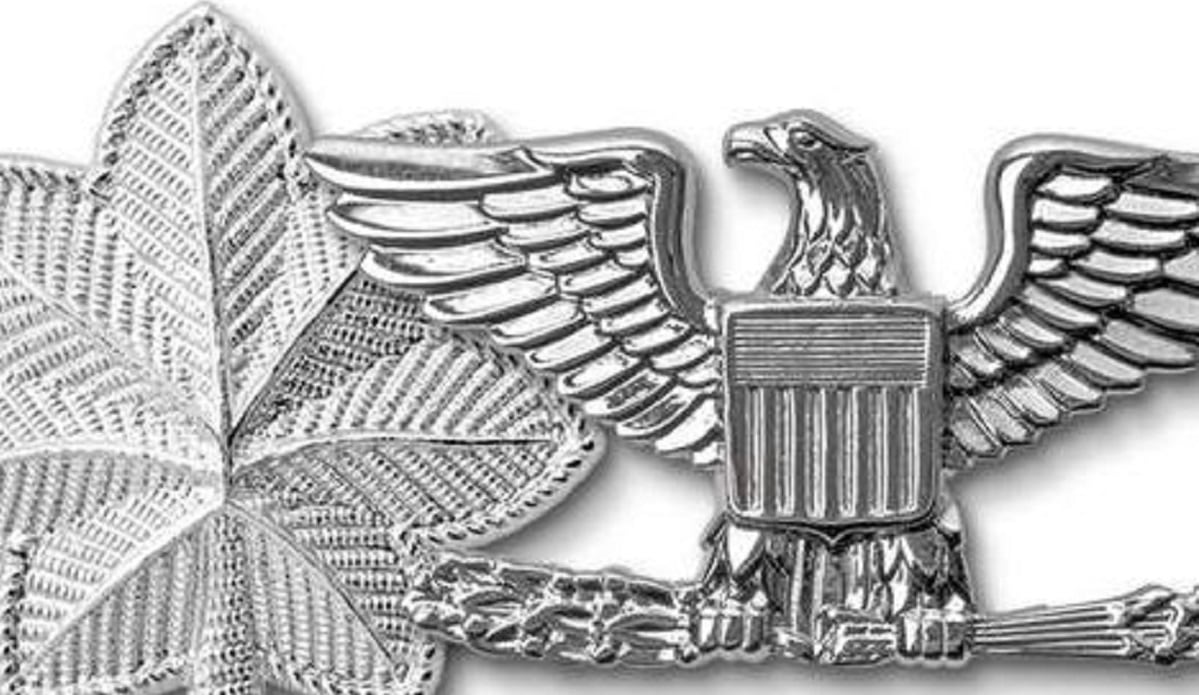The Air Force’s first promotion board for lieutenant colonel since eliminating early, or below-the-zone, promotions resulted in significantly higher selection rates for the other categories.
In a Monday release, the Air Force Personnel Center said that 1,045 Line of the Air Force majors who were in-the-zone, meaning they fell in the normal period in their careers when officers are usually promoted to lieutenant colonel, were selected for promotion. This amounted to a 76.1 percent selection rate, which was higher than the 71.4 percent and 72 percent selection rates from 2018 and 2019, respectively.
There were also 169 majors chosen for promotion above-the-zone, meaning they were promoted later than officers usually are, for a selection rate of 13 percent. That’s nearly double the 6.7 percent and 6.2 percent selection rates of 2018 and 2019.
In all, 1,214 officers were selected for promotion to O-5.
“As anticipated, this first board had record-high IPZ and APZ rates primarily associated with removing BPZ opportunity,” Air Force personnel chief Lt. Gen. Brian Kelly said in the release. “This was intentional and was a conscious decision to help provide additional time for officers to gain valuable insight and experience that in some cases was lost when we accelerated people.”
The results of the promotion board will be released Tuesday, according to AFPC.
This is also the first officer promotion board since the Air Force broke the broad Line of the Air Force group into six smaller categories last October. And it will be the first time officers will be assigned line numbers, indicating the order in which they pin on their new ranks, based on merit instead of seniority.
“It remains important to focus on competence and character and have a system that incentivizes performance, but also takes into account different developmental timelines for people,” Kelly said in the release. “Top performers still have an opportunity to promote ahead of their peers, and merit-based reordering puts the pin-on timing directly in their hands.”
The Air Force announced these major changes to the officer personnel and promotion process throughout last year, as part of an effort to produce a fairer system and to give officers more time to develop.
RELATED

Critics of the old system of below-the-zone promotion said it resulted in some officers being earmarked early on as high-performers and putting them on the fast track for leadership roles. That, said critics such as Col. Jason Lamb, who wrote op-eds about leadership in the Air Force under the pseudonym 'Col. Ned Stark,’ meant that fast-tracked officers who failed to develop later on or who showed problems along the way were already well on their way to leadership positions, and “late bloomers” were frozen out.
Kelly said in a fact sheet last December that these early promotions also limit the Air Force’s “ability to recognize emerging talent as it blooms or even worse, it can lead to us leaving talented officers behind.”
Kelly also said last year that early promotions can even disadvantage those officers by giving them less time to develop their leadership skills and experience.
This year’s lieutenant colonel board was held from May 4th through 20th. The O-5 board typically convenes in March, but the Air Force delayed this year’s board to give the changes time to take effect.
More than 2,600 officers in more than 40 Air Force specialty codes were considered for promotion this year under the six new Line of the Air Force competitive categories: Air Operations and Special Warfare; Combat Support; Force Modernization; Information Warfare; Nuclear and Missile Operations, and Space Operations.
The Air Force said that for each developmental category’s panel, a majority of its members came from that category. The air operations board, for example, had 13 members, eight of whom came from career fields in that category.
“This tailored approach ensures panel members consider officers in each category against similar career milestones and expectations,” AFPC commander Maj. Gen. Christopher Craige said. “They focused on each officer’s performance and potential to serve in the next higher grade to promote officers with the expertise to lead airmen and space professionals today and for a future high-end fight.”
The new promotion categories also gave the Air Force flexibility to adjust the percentages of officers who could be promoted to better match the service’s requirements, the release said.
The selection rates within each LAF category are:
* Air Operations and Special Warfare: promotion opportunity, 90 percent; in-the-zone, 77.8 percent; above-the-zone, 12.5 percent
* Combat Support: promotion opportunity, 85 percent; in-the-zone, 79.9 percent; above-the-zone, 7.5 percent
* Force Modernization: promotion opportunity, 85 percent; in-the-zone, 69 percent; above-the-zone, 14.6 percent
* Information Warfare: promotion opportunity, 90 percent; in-the-zone, 74.1 percent; above-the-zone, 15.8 percent
* Nuclear and Missile Operations: promotion opportunity, 85 percent; in-the-zone, 76.3 percent; above-the-zone, 11.4 percent
* Space Operations: promotion opportunity, 90 percent; in-the-zone, 75.4 percent; above-the-zone, 17.2 percent
Stephen Losey is the air warfare reporter for Defense News. He previously covered leadership and personnel issues at Air Force Times, and the Pentagon, special operations and air warfare at Military.com. He has traveled to the Middle East to cover U.S. Air Force operations.




